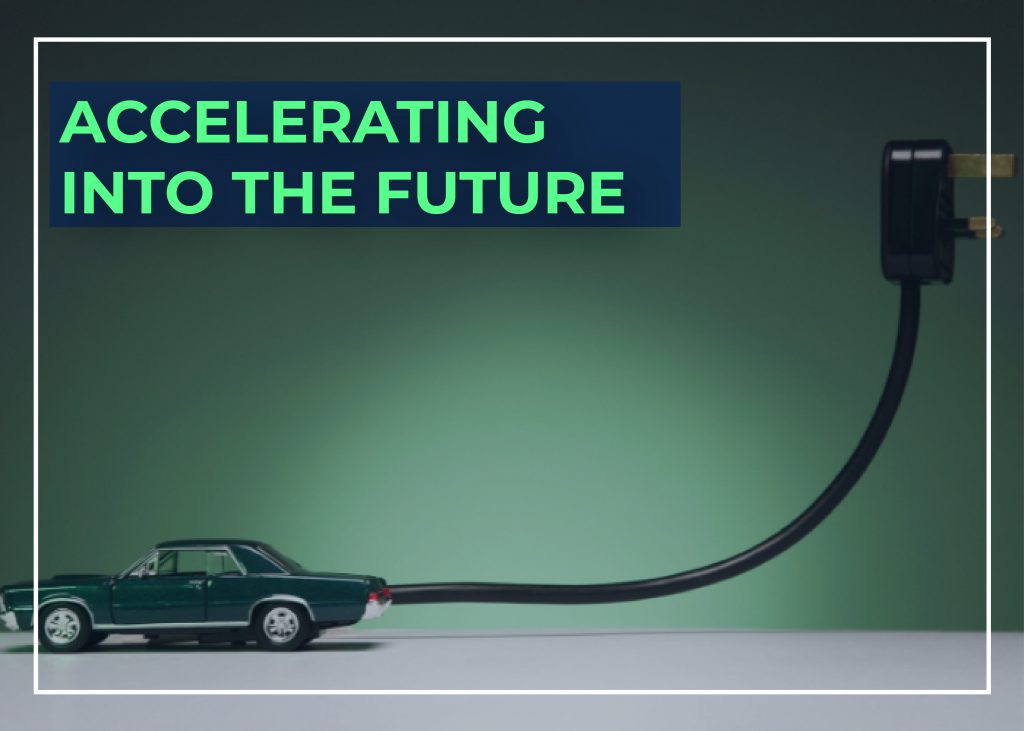
The Automotive Industry is currently experiencing a significant transformation, driven by the rapid advancement of technology. From self-driving cars to connected vehicles, new technologies are reshaping the way we perceive and use automobiles.
In this article, we will explore some of the key ways technology is revolutionizing the automotive industry, including self-driving cars, connected cars, electric vehicles (EVs), and advanced driver assistance systems (ADAS).
Self-Driving Cars: Revolutionizing Transportation
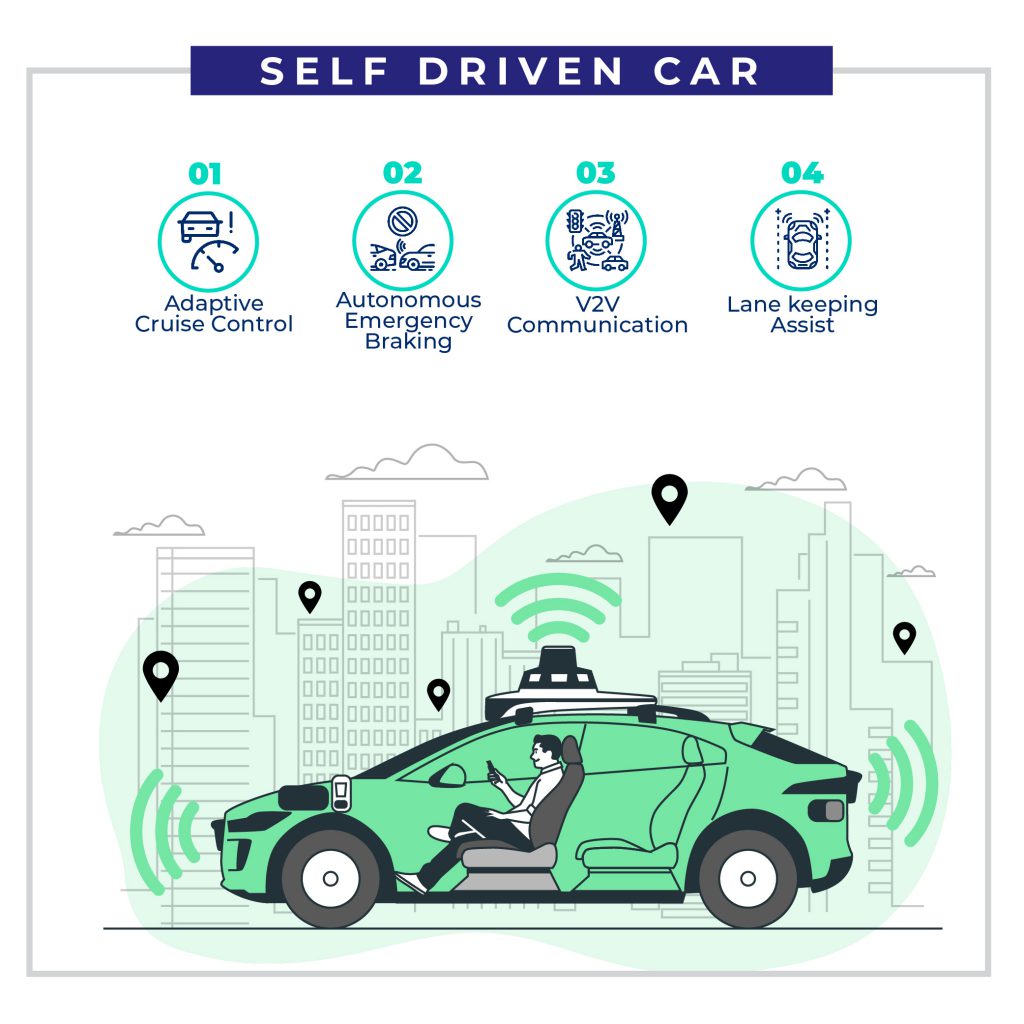
Let’s start with self-driving cars. This is perhaps one of the most groundbreaking and disruptive technologies in the automotive industry. Self-driving cars, also known as autonomous vehicles, rely on an array of sensors and advanced software to navigate and operate without any human intervention. It’s like having a personal chauffeur, but without the actual driver!
Self-driving cars have the potential to revolutionize transportation as we know it. One of the most significant advantages is their ability to make our roads safer. By minimizing human error, which is a leading cause of accidents, self-driving cars can significantly reduce the number of accidents caused by human factors. With advanced sensors and real-time data analysis, these vehicles can detect and respond to potential hazards much faster than humans can.
But safety is just the tip of the iceberg. Self-driving cars also promise greater efficiency and accessibility. Imagine a future where you can relax or be productive during your daily commute instead of being stuck in traffic or wasting time behind the wheel. Autonomous vehicles can optimize traffic flow, leading to smoother journeys and reduced congestion. They can also be integrated with ride-sharing services, making transportation more accessible to those who don’t own cars or have limited mobility.
“The Indian government is currently working on developing regulations for self-driving cars. In 2017, the government released a draft policy for self-driving cars, but it has not yet been finalized. The government is considering a number of factors, such as the safety of self-driving cars, the impact on jobs, and the need for infrastructure, as it develops the regulations.”
Before self-driving cars can become widespread in India, challenges like complex traffic conditions and inadequate infrastructure need to be addressed. Advanced algorithms, robust testing, dedicated infrastructure, and supportive regulations are crucial for the successful integration of autonomous vehicles on Indian roads.
Connected Cars: Enhancing Safety and Convenience
“The Indian connected car market is expected to grow at a CAGR of 25% from 2022 to 2027.”
The adoption of connected cars is expected to continue to grow in the coming years. By 2027, it is estimated that over 1 million connected cars will be sold in India.
So, let’s shift gears and talk about connected cars.
Equipped with internet connectivity, connected cars have the ability to communicate with other vehicles, infrastructure, and the vast cloud. This connectivity opens up a world of possibilities, starting with enhanced safety. Imagine receiving real-time information about traffic conditions, potential hazards, and road updates right from your car. Connected cars enable this by sharing valuable data, keeping drivers informed and helping them make safer decisions.
But the benefits don’t stop there. Connected cars are also making waves in terms of fuel efficiency. By leveraging the data they gather, these vehicles can optimize driving routes, reducing congestion and maximizing fuel usage. It’s a win-win situation for both your wallet and the environment.
Convenience is another major perk of connected cars. With integrated entertainment systems, drivers and passengers can access their favorite music, podcasts, and even streaming services, making every journey more enjoyable. Personalized recommendations based on your preferences add an extra touch of magic, guiding you to nearby attractions, restaurants, and more.
And let’s not forget about the convenience of remote access control. With connected cars, you can lock or unlock your vehicle, check its status, and even adjust the temperature—all from the palm of your hand. It’s like having your car at your beck and call, making life easier and more convenient.
Electric Vehicles: A Sustainable Alternative
“India achieved 200%+ growth in EV sales in FY22 over FY21. The Government intends to achieve 30% market penetration in the passenger cars segment by 2030.”
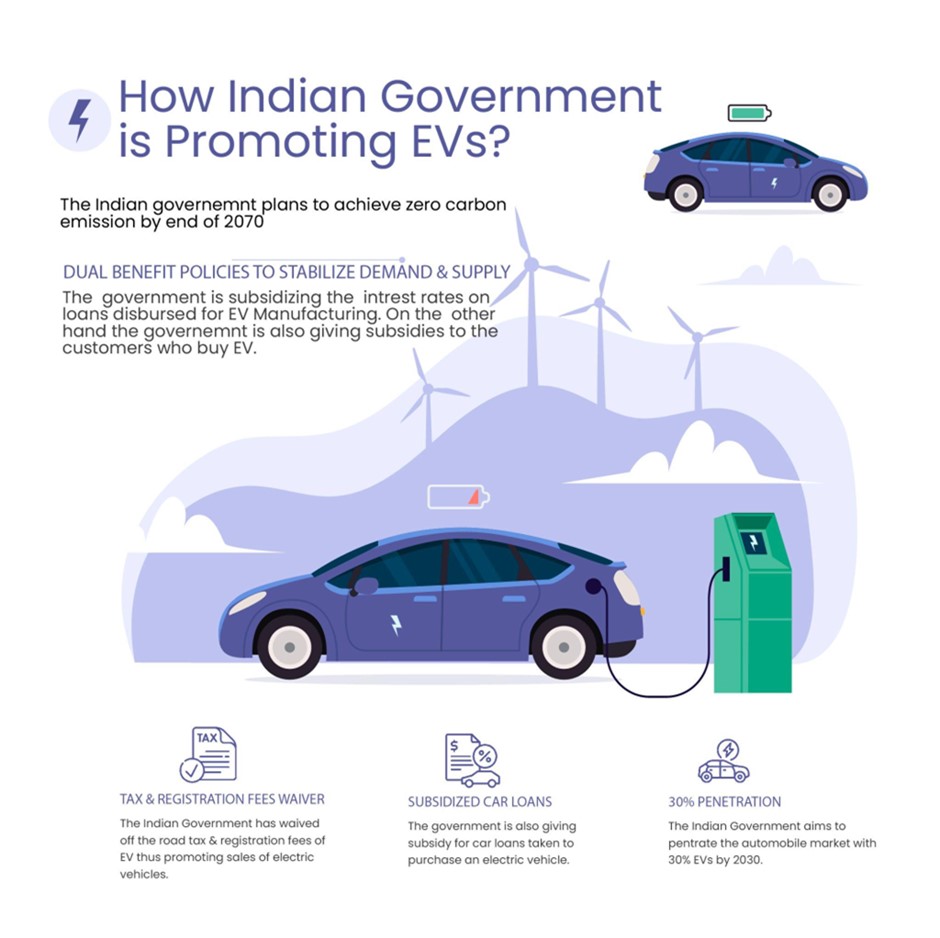
Electric vehicles (EVs) are stealing the spotlight as environmental consciousness grows. Powered by batteries, EVs produce zero emissions, making them an eco-friendly choice.
One concern that often comes up when discussing EVs is range anxiety. However, fear not! Ongoing advancements in battery technology are continuously improving the driving range of EVs. Manufacturers are developing batteries with higher energy density, allowing EVs to travel longer distances on a single charge. With each new generation of EVs, range anxiety becomes less of a worry.
But it’s not just the technology that’s driving the EV revolution. Governments and regulators worldwide are stepping up to incentivize the adoption of EVs. Various initiatives, such as tax incentives and subsidies, make EVs more financially attractive for consumers. Additionally, charging stations are popping up in cities, along highways, and even at workplaces, making it more convenient for EV owners to power up their vehicles.
It’s worth noting that EVs aren’t just limited to cars. The electric revolution is spreading to other modes of transportation, including buses, trucks, and even motorcycles. This means that the positive environmental impact extends beyond personal vehicles, leading to a more sustainable future across various sectors.
In 2022, the Indian government announced a FAME II (Faster Adoption and Manufacturing of Hybrid and Electric Vehicles) scheme, which aims to support the adoption of 700,000 EVs by 2022-23. This scheme is expected to give a major boost to the adoption of EVs in India.
To achieve the ambitious goal of a net-zero economy by 2070, it is crucial to accelerate the adoption of electric vehicles (EVs) in both private and commercial sectors. Electrification of fleets is particularly important in this transition.
Advanced Driver Assistance Systems (ADAS): A Safer Driving Experience
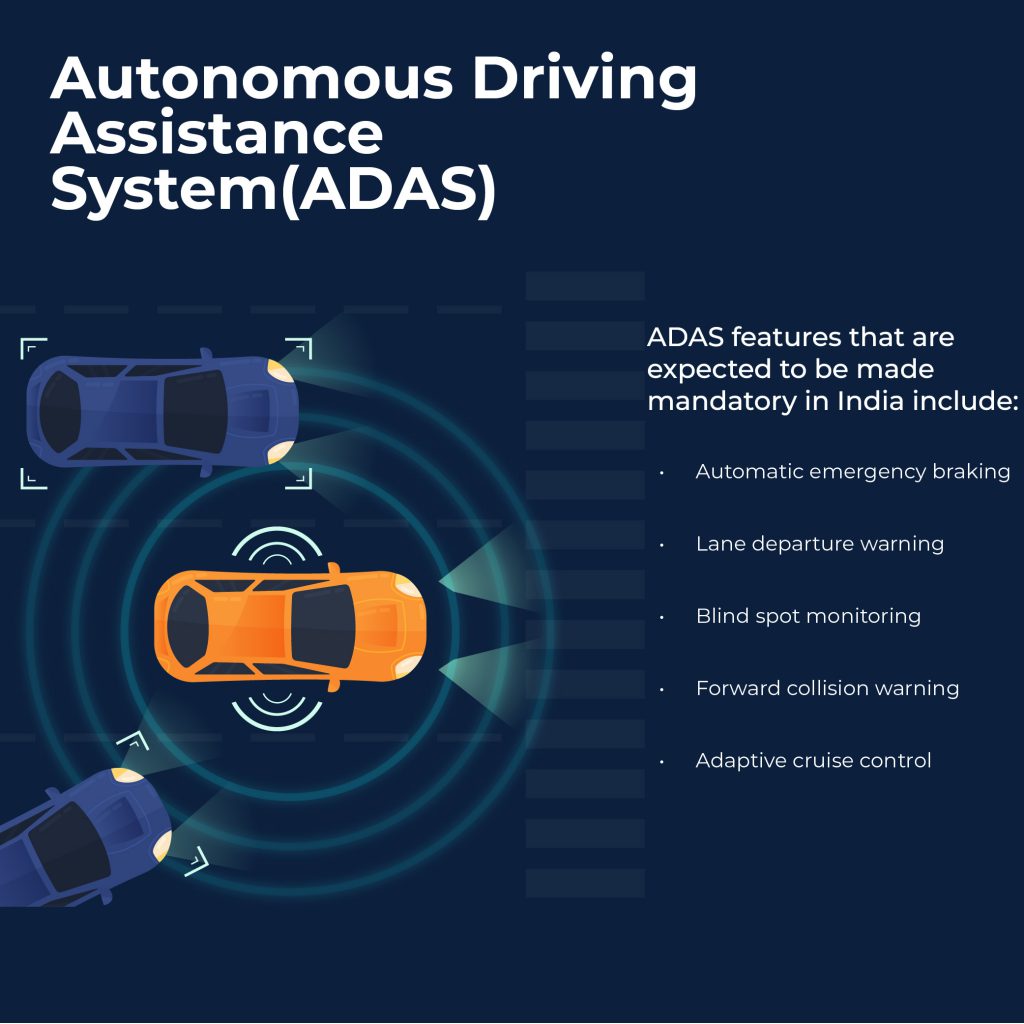
“The Indian government has made it mandatory for all new cars to be equipped with ABS (anti-lock braking system) and airbags from April 1, 2022.”
Let’s talk about the game-changing technology that’s taking the automotive industry by storm: Advanced Driver Assistance Systems (ADAS). These systems are designed to enhance driver safety and prevent accidents, making our journeys on the road much safer. Buckle up as we explore the exciting world of ADAS and the incredible features it brings to the table!
ADAS technologies have become increasingly prevalent in modern vehicles, offering a wide range of safety features. Automatic emergency braking, lane departure warning, and adaptive cruise control are just a few examples of the capabilities ADAS systems provide. By leveraging a combination of sensors, cameras, and advanced algorithms, these technologies work tirelessly to assist drivers in various situations.
One of the most crucial benefits of ADAS is the prevention of accidents. Automatic emergency braking systems can detect potential collisions and apply the brakes automatically to mitigate or avoid the impact. Lane departure warning systems keep drivers in check by alerting them if they unintentionally drift out of their lane. Adaptive cruise control adjusts the vehicle’s speed to maintain a safe distance from the vehicle ahead. These features, among many others, contribute to a significant reduction in the risk of collisions and promote overall road safety.
ADAS has the potential to save lives. By augmenting human capabilities and acting as an extra set of eyes on the road, these systems help to avoid the errors and distractions that can lead to accidents. They provide drivers with invaluable assistance, improving their ability to navigate challenging situations and make safer decisions behind the wheel.
Not only do ADAS technologies make driving safer, but they also contribute to a more secure and stress-free driving experience. By having these systems in place, drivers can feel more confident and relaxed, knowing that they have an extra layer of protection on the road. ADAS empowers drivers to focus more on the joy of driving and less on potential hazards.
As technology continues to advance, we can expect even more innovative ADAS features to be developed. From blind-spot monitoring to traffic sign recognition, the possibilities are endless. The automotive industry is committed to making driving as safe and secure as possible, and ADAS plays a pivotal role in achieving this goal.
Conclusion
In conclusion, the Automotive Industry is undergoing a remarkable transformation, driven by the rapid advancement of technology. Self-driving cars are poised to revolutionize transportation, making our roads safer, more efficient, and highly accessible. Connected cars, with their internet connectivity, enhance safety by providing real-time information and optimizing driving routes for improved fuel efficiency.
They also offer convenience through integrated entertainment systems and personalized recommendations. As environmental consciousness grows, electric vehicles (EVs) are gaining popularity as a sustainable alternative to traditional gasoline-powered cars. Advanced Driver Assistance Systems (ADAS) provide a safer driving experience by preventing accidents and assisting drivers in various situations.
As we look ahead, the automotive industry will continue to embrace technological advancements, paving the way for a future that is safer, more efficient, and environmentally friendly. With ongoing innovation and collaboration, we can expect even greater breakthroughs in the automotive landscape, creating a transportation experience that is both exciting and sustainable.

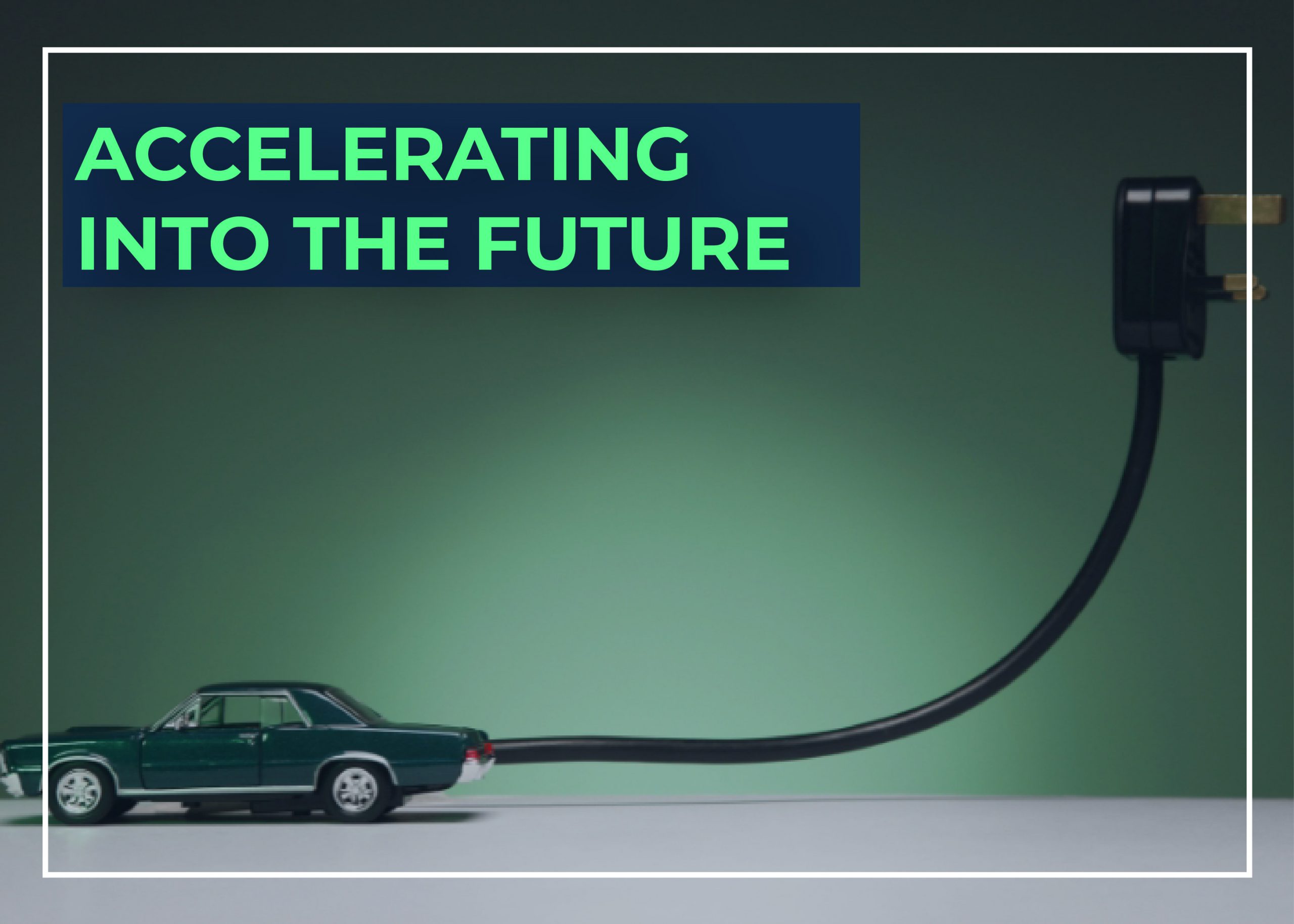
Leave a Reply